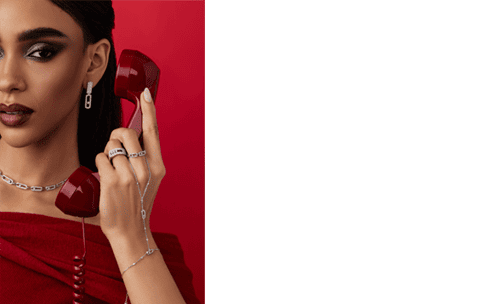Freelance vs. Studio Product Photographer: Which Career Path is Best for You?
Choosing a career path in product photography often presents an exciting crossroads: the freedom and potential of freelancing or the stability and structure of a studio environment. Whether you're drawn to creative independence or prefer the collaborative buzz of an in-house team, understanding the unique advantages and challenges of each option is essential for making the right decision. Let’s explore both paths to help determine which one aligns best with your professional goals.

What It Means to Be a Freelance Product Photographer
Freelance product photographers work independently, handling all aspects of their business, including client acquisition, photoshoot team sourcing, photography, post-production, equipment, and marketing. Unlike studio photographers, who receive assignments, freelancers must actively build their clientele and establish a strong professional reputation.
Advantages of Freelancing
Complete creative control. Freelancers enjoy full autonomy over project selection, branding, and pricing strategies, enabling them to pursue projects that align closely with their personal style and artistic vision. This creative freedom allows photographers to develop distinctive visual signatures that set them apart in the marketplace. They can choose to specialize in specific product categories, experiment with innovative techniques, and decline projects that don't align with their brand or values. This level of control extends to every aspect of their work, from the initial concept development through final delivery, allowing for a more personalized and satisfying creative process.
Earning potential. Freelancers can command higher rates by offering premium, specialized services directly to clients, without agency overheads, reducing their profit margins. Successful freelance photographers often earn significantly more than their studio-employed counterparts by positioning themselves as specialists in high-value niches, building relationships with premium brands, and scaling their services through efficient workflows. They can adjust their pricing based on market demand, client budgets, and complexity of projects, allowing for greater financial flexibility and growth potential over time.
Flexible scheduling. The freedom to select projects, clients, and work hours according to personal preferences and lifestyle needs provides unmatched work-life balance opportunities. Freelancers can schedule shoots around family commitments, travel plans, or personal interests, creating a lifestyle that aligns with their priorities. This flexibility extends to choosing the duration and intensity of work periods, allowing photographers to take on intensive projects during busy seasons and scale back during slower periods for rest and skill development.
Cross-industry opportunities. Flexibility to explore diverse niches, such as fashion, jewelry, cosmetics, electronics, or editorial photography, keeps work interesting and prevents creative stagnation. This variety enables freelancers to develop multiple revenue streams, thereby reducing their dependence on any single client or industry sector. Working across different industries also provides valuable insights into various marketing approaches, consumer behaviors, and technical requirements that can enhance overall professional expertise and market value.
Personal brand growth. Opportunity to build a strong personal brand and become an industry authority within specific niches creates long-term competitive advantages and recognition. Successful freelancers often become go-to experts for particular types of product photography, leading to premium pricing, referral business, and opportunities for speaking engagements, workshops, or educational content creation. This personal brand development can open doors to collaborative partnerships, consulting opportunities, and passive income streams that extend beyond traditional photography services.
Challenges of Freelancing
Continuous marketing and relationship building to maintain a steady stream of clients demands substantial time and energy that could otherwise be devoted to photography. This includes developing marketing materials, maintaining social media presence, networking at industry events, following up with prospects, and nurturing existing client relationships through regular communication and exceptional service delivery.
Managing finances, contracts, invoicing, and other business operations can consume substantial time and require skills that many photographers don't initially possess. Freelancers must handle bookkeeping, tax preparation, contract negotiations, payment collection, insurance management, and legal compliance issues that can be complex and time-consuming. Many successful freelancers eventually invest in accounting software, legal consultation, or business management services to handle these responsibilities more efficiently.
Income fluctuations, particularly common during the initial stages of building a clientele base, create financial stress and require careful financial planning. Freelancers must prepare for seasonal variations in demand, economic downturns, and gaps between projects by maintaining emergency funds and developing multiple income streams. This financial uncertainty can be particularly challenging for photographers with families or significant financial obligations who require predictable income levels.
Initial and ongoing investment in professional-grade photography equipment and personal studio setup represents significant capital requirements that can strain finances, especially for new freelancers. This includes cameras, lenses, lighting equipment, computers, software licenses, studio space, insurance, and regular equipment upgrades to remain competitive. Many freelancers start with minimal equipment and gradually build their kit as their business grows and generates revenue.
Balancing photography tasks with business development, talent management, client interactions, and post-production tasks requires meticulous planning and exceptional time management skills. Successful freelancers must excel at project management, delegation, and workflow optimization to maintain quality standards while handling the diverse responsibilities of running a business. This often involves developing systems for client communication, project tracking, file management, and quality control that ensure consistent results and professional service delivery.
How Freelancer Photographers Can Succeed
Successful freelance photographers focus on building strong client relationships, marketing themselves effectively, and streamlining their workflow. Essential strategies include:
- Creating an optimized online portfolio and professional website.
- Networking with eCommerce businesses, agencies, and startups.
- Offering additional services, such as product retouching and content consulting.
- Collaborating with retouchers, stylists, and creative directors to deliver high-end results.
Freelancing suits photographers who value independence and flexibility but are willing to take on the challenges of running a business.
Related Read: How To Become A Product Photographer
Studio Product Photographer: Stability with Structured Workflows
A studio product photographer works as part of a team, typically for a commercial photography studio, an agency, or an in-house brand. These photographers handle consistent product shoots, often following strict brand guidelines. Studios may specialize in areas such as fashion, cosmetics, jewelry, or food photography and usually provide professional-grade equipment and lighting setups.
Advantages of Studio Photography Jobs
Studio photography positions offer numerous benefits that make them attractive to many photographers. Financial stability represents one of the most significant advantages, providing a consistent salary or predictable hourly pay that eliminates the financial uncertainty commonly associated with freelance work. This steady income allows photographers to plan their finances more effectively and reduces the stress of inconsistent earnings that independent contractors often face.
Client management becomes significantly easier in studio environments since assignments are provided by the studio management, eliminating the necessity to secure new clients or perform marketing tasks. This arrangement allows photographers to focus entirely on their craft rather than spending time on business development activities like networking, creating portfolios for client acquisition, or managing social media marketing campaigns.
Professional infrastructure in studios provides access to advanced photographic equipment, extensive lighting systems, and dedicated studio environments that would be prohibitively expensive for individual photographers to acquire. This includes high-end cameras, specialized lenses, professional lighting modifiers, backdrop systems, and post-production workstations equipped with the latest software and hardware.
Collaboration opportunities abound in studio settings, offering the ability to regularly work with other industry professionals, including experienced stylists who understand product presentation, skilled retouchers who can enhance images to professional standards, creative directors who provide artistic vision and direction, and marketers who understand consumer psychology and brand positioning. These collaborative relationships often lead to valuable learning experiences and professional growth that would be difficult to achieve working in isolation.
The studio environment allows for a dedicated focus on photography by reducing administrative duties that typically burden freelance photographers. Studio photographers don't need to handle invoicing, contract negotiations, equipment maintenance, studio rental, or client communications, allowing them to concentrate entirely on the creative and technical aspects of photography.
Challenges of Studio Photography Jobs
However, working in a studio environment comes with certain challenges that photographers must consider carefully.
Creative limitations often present the most significant drawback, as projects may offer less creative freedom and require strict compliance with predetermined guidelines and client directives. Photographers must work within established brand standards, color palettes, and compositional requirements that may not align with their personal artistic vision.
Structured schedules represent another challenge, offering less flexibility in working hours with expectations to adhere to fixed schedules that may include early morning shoots, late evening sessions, or weekend work depending on client demands. This structure can be particularly difficult for photographers who prefer the freedom to set their own hours or who have family commitments that require flexible scheduling.
Career growth limitations can become apparent over time, with potential salary ceilings and fewer opportunities for substantial income increases compared to successful freelance photographers who can scale their rates and client base. Studio photographers may find themselves in positions where advancement opportunities are limited, and significant salary increases require moving to different companies or transitioning to freelance work.
Limited personal branding opportunities mean that work produced in studio environments often attributes recognition to the studio rather than the individual photographer. This can make it challenging to build a personal portfolio and reputation that could support future freelance endeavors or career transitions within the industry.
How to Succeed as a Studio Photographer
- Develop advanced technical photography skills to maintain versatility across diverse project demands.
- Develop expertise beyond photography
- Adapt to different client expectations and brand identity requirements.
- Learn to work efficiently in a team with stylists, retouchers, and creative directors.
- Keep up with industry trends in eCommerce and commercial photography.
A studio position is ideal for photographers who prefer structure, team collaboration, and financial stability over business management.
Choosing the Right Path for You
Your decision between freelancing and studio employment should align with your long-term career aspirations, work style preferences, and personal strengths. Freelancing provides expansive creative freedom and the excitement of entrepreneurship, ideal for self-motivated individuals comfortable with risk and passionate about shaping their professional identity. Need support with retouching to streamline your freelance workflow? Order LenFlash professional retouching services to elevate your product photography effortlessly.
Conversely, studio positions offer structured environments, consistent financial stability, and team-based creative collaboration, ideal for photographers seeking predictability and camaraderie. If you're an experienced product photographer ready to embrace new creative challenges and collaborate with forward-thinking brands, LenFlash warmly welcomes you to explore opportunities for innovative projects and professional growth.
Both paths hold immense potential for career satisfaction and creative fulfillment. Reflect carefully on which environment resonates most with your















